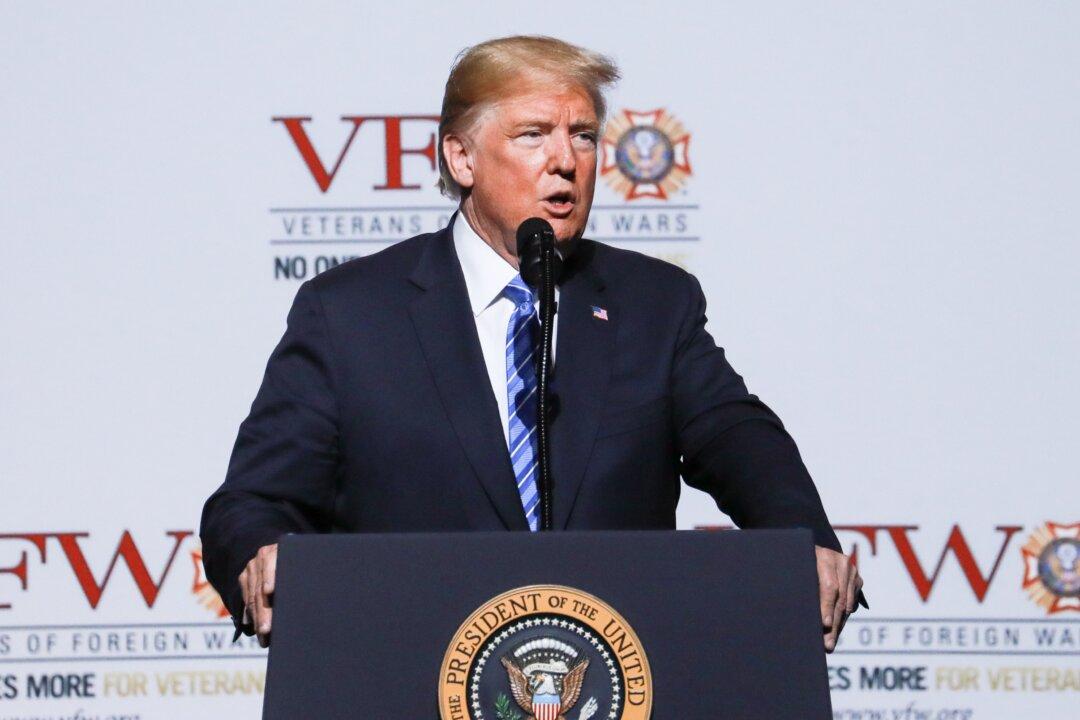President Donald Trump has expressed willingness to engage with the Iranian leadership two days after pushing back against the threatening rhetoric of the Iranian president.
“I withdrew the United States from the horrible one-sided Iran nuclear deal. And Iran is not the same country anymore, that I can say. And we’ll see what happens. But we’re ready to make a real deal, not the deal that was done by the previous administration, which was a disaster,” Trump said on July 24 at the Veterans of Foreign Wars national convention in Kansas City.





